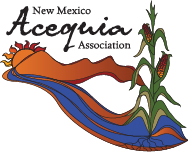By Donne Gonzales, NMAA Farm Trainer, and the Sembradores Team
Planting season is here, and it’s time to get your hands in the soil and listen to the sounds of Spring. Whether you’re a seasoned grower or just starting out, keeping a farm plan simple can help you stay grounded, while making the most of your land, time, and energy.
Start with What You Know and Love
One of the best places to begin is with foods that are traditional to your family, diet, or community. Think the “Three Sisters” — beans, corn, and squash — time-tested staples that work beautifully together in the field and on the plate.
And don’t forget your family’s favorites! In our household, sweet peas, carrots, and salad turnips are always a hit — especially with the kids. Growing what your family actually wants to eat makes your harvest more joyful (and way more delicious).
Know Your Region, Know Your Timing
New Mexico growers, you already know: our state has so many microclimates. From high mountain valleys to desert lowlands, each region has its own rhythm.
- Higher elevations tend to be cooler with shorter growing seasons.
- Lower elevations love the heat — perfect for crops like chile and melons.
Understanding your local climate and soil will save you years of trial and error. Keep notes. Watch the shade. Notice the bugs, the rocks, the water flow, and even invasive plants. Your land will tell you everything you need to know — if you stop and look for the clues.
Adapting to a Changing Climate
With snowpack well below average along with reservoir storage are garden planning should take into account our shifting and unpredictable seasons and weather patterns which include intensifying droughts, floods, wind, hail, forest fires etc. Some considerations:
- If the water supply in your areas in uncertain consider shorter season early or late crops like radishes, greens etc to avoid the heat and irrigate when water is more likely to be available
- Mulch in crops with straw or other material to retain moisture
- Use various season extension techniques, row cover, hoop houses etc to extend the cool season crop opportunities and protect from various weather events
- Support water sharing on your ditch and in your community
At our Sembradores training site, we’re currently planting:
Direct in the ground:
- Loose-leaf salad lettuce
- Head lettuce
- Kale
- Chard
In almácigos (seed starts):
- Tomatoes
- Peppers
- Watermelon
- Cantaloupe
- Herbs
Some of our all-time favorites (and reliable winners) include peas, spinach, radishes, carrots, cucumbers, garlic, and the mighty kale and chard.
Farm Planning Is Business Planning
Let’s be real — farming isn’t just about planting seeds; it’s about planting intentions. Planning helps prepare for the unknowns of nature: wind, bugs, drought, floods — all of it.
Why plan ahead?
Because every head of lettuce or handful of carrots you grow is one less thing you need to buy. That’s resilience, that’s independence — and that’s money saved.
It’s also important to remember: this isn’t one-size-fits-all. It takes years to truly learn your land. Don’t be afraid to ask for help, keep your mind open, and lean into community/ elder wisdom.
At the End of the Day…
Everything is connected. What we plant, what we eat, how we care for the earth — it all matters.
And honestly?
Farmers are going to save the world.
So let’s get growing.

Photo by Miguel Santistevan



Leave a Reply